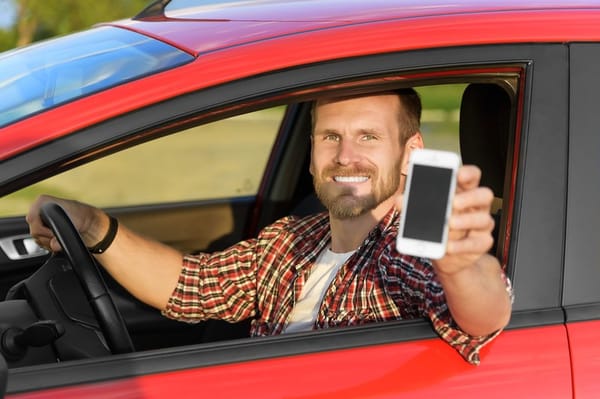
You have a 20-year-old son who is a junior in college. He wants to earn some spending money. Or you're a 66-year-old retiree. You're a little bored, and your inner extrovert wants to get out there and meet people while performing a service. Or you're a 43-year-old mother of 2 who wants to supplement your 9-to-5 income with a part-time job that pays well while allowing you the freedom to work flexible hours so that you can still meet the needs of your kids.
These are just a few examples of the types of people that become drivers for "transportation network companies (TNCs)" such as Uber and Lyft.
Insurance for Uber, Lyft, and Other Ridesharing Drivers
The problem is that, as soon as you open up the driver app announcing that you are now available to accept riders, you cease to have any coverage in your personal auto policy. From that moment until you have delivered your last riders and closed down the application, you have no liability coverage—not only for injuries to people riding with you but also to anyone else you have caused injury to by your negligence. You also have no defense coverage. Even if the accident is not your fault, you won't have any uninsured or underinsured motorist coverage for your own injuries. You also won't have any collision coverage for damage to your car.
The reason your personal car insurance doesn't cover you is an ages old exclusion for hauling others for a fee. This has always been excluded. It's just been in the spotlight again because of ridesharing services like Uber and Lyft and their mobile phone technology.
The standard of care you owe a passenger who is paying you to drive her from point A to point B is far greater than hauling a neighbor for free to a doctor's appointment. Thus, the need for the exclusion.
Uber Driver Risks
There are three phases of risk facing an Uber driver and different coverage Uber provides in each phase.
- Phase 1: The Sign-in Phase—This is the period when you are available for rides but have not yet accepted a passenger. This phase is the biggest area of gap coverage for a driver. Uber provides $50,000/$100,000 total for injuries and $25,000 for property damage to others ($30,000 in Minnesota). Beyond those amounts, the driver's personal assets are entirely at risk. Also, in this phase, damage to the driver's car has no coverage whatsoever.
- Phase 2 (Acceptance) and Phase 3 (Transporting a Passenger(s))—Uber provides the most coverage in these two phases: $1 million combined for liability ($1.5 million in Minnesota), $1 million for injuries caused by uninsured and underinsured motorists, and $1,000 deductible for damage to the driver's vehicle.
(Note: Lyft provides similar coverage in all three phases, except it caps the payout on the driver's vehicle at $50,000 with a $2,500 deductible. (Source: IRMI Personal Risk Management and Insurance.))
In one shift, a driver will pass through each of the phases several times, and his personal auto policy won't apply until he signs out and his shift is over.
Optional Rideshare Endorsements
To my knowledge, all rideshare endorsements currently available pick up the coverages excluded in phase 1 (logged on, but no rides accepted yet). There's no standardization of forms, so each endorsement available will need to be read and interpreted by a professional.
For a cost of about $10 a month, Safeco has just introduced its rideshare endorsement that reinstates during phase 1 all the liability, uninsured/underinsured motorist, collision, and comprehensive coverages that are otherwise excluded.
Coverage under a Driver's Personal Umbrella Policy
Unfortunately, umbrella policies have the same driving-for-hire exclusion and do not, to my knowledge, offer a rideshare endorsement. If they start offering coverage, it's important that the coverage applies to all three phases on an excess basis. Until they do, I can't recommend that my clients with umbrella policies become TNC drivers. After all, driving others for hire for most drivers is the single biggest liability risk they face.
A Temporary Fix
If you are determined to be an Uber driver, try as best you can to equalize your phase 1 liability and uninsured/underinsured motorists coverage with a rideshare endorsement to your personal auto policy, with your phase 2 and phase 3 coverages provided by the TNC. In most jurisdictions, that would be $1 million. That way, you would have the same protection of $1 million covering you whether you are driving for pleasure or for Uber.
Opinions expressed in Expert Commentary articles are those of the author and are not necessarily held by the author's employer or IRMI. Expert Commentary articles and other IRMI Online content do not purport to provide legal, accounting, or other professional advice or opinion. If such advice is needed, consult with your attorney, accountant, or other qualified adviser.

